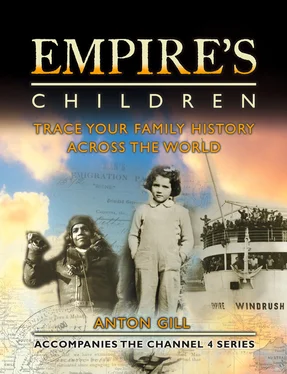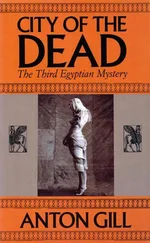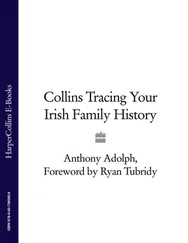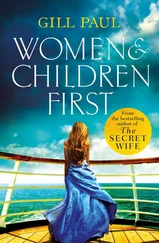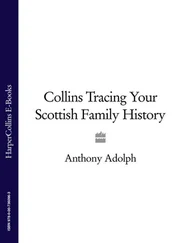APART FROM THE NEED TO NIP THIS REBELLION IN THE BUD, THE AFFRONT OF THE BLACK HOLE OF CALCUTTA DEMANDED VENGEANCE.
Siraj was not the only Indian ruler to try to assert his independence against the British. Tipu Sultan, the Tiger of Mysore (1750–99), was the eldest son of Haider Ali. He succeeded his father as ruler of Mysore in 1782. Tipu was a cultivated man, a poet and a linguist, as well as an able soldier. He is one of the heroes of Indian independence. An early opponent of the British, and quick to see the danger of giving them too much rope, he fought alongside his father, then an ally of the French, and defeated the British in the Mysore War of 1780–4. He continued to resist the British for the rest of his reign, and died bravely, defending his capital, Seringapatam, when Mysore’s resistance came to an end.
The most famous relic of his reign is his Tiger-Organ, a life-sized model of a Bengal tiger mauling a prostrate British redcoat. The organ is fitted with a number of pipes, and when operated, the tiger roared and growled and the soldier cried and groaned. After Tipu’s fall, it was seized and sent for display to the East India Company Museum in London, where it created a great stir. Keats even alluded to it (rather foolishly) in his ‘Cap and Bells’. It can now be seen at the Victoria and Albert Museum in South Kensington, but it is no longer played.
During its ascendancy, from the time of Clive’s victories in the mid-eighteenth century to its demise in the wake of the Indian Mutiny of 1857, the British East India Company, or ‘John Company’ as it was nicknamed, through a policy of shrewd trade-offs with local rulers, and of playing them off against each other; through the placement of British ‘advisers’ in the various courts of the rajahs and maharajahs, and the development of a highly efficient private army, ran the subcontinent for the British with a minimum of fuss and a great deal of profit.
Another aspect is of interest. It was not until the nineteenth century that fraternizing with the local people began to be discouraged as a general rule. In the eighteenth and early nineteenth centuries, miscegenation was actively encouraged, and many a prominent ‘British’ officer was born as a result. James Skinner (1778–1841), the founder of ‘Skinner’s Horse’ cavalry regiment, had an English father, but a Rajput mother.
Such events, tragic as they are, and whatever the truth behind them, are the very last twitchings of a dead age. More serious are the possible repercussions. There has been talk in Kenya of following Zimbabwe’s lead in forcible repossession of farms owned by whites. Over all this falls the shadow of Empire.
In Britain, and much more positively, belonging as it were to a different age, perhaps the greatest recent flowering of ‘immigrant’ talent has been in the arts. Not only does Britain have established sculptors and painters of the calibre of Anish Kapoor (born in Bombay in 1954 but now living in England) and Chris Ofili (born in Manchester in 1968) as well as rising stars such as Raqib Shaw (born in 1974 in Calcutta, now living and working in London), but in the last decade or two she has been privileged to see a great wave of new novelists from the non-white ethnic minority community. Apart from established, eminent, even venerable writers such as R. K. Narayan, Anita Desai and Salman Rushdie and the Nobel prizewinners Sir V. S. Naipaul and Wole Soyinka, recent years have seen a flood of novels from the pens of such (predominantly female) writers as Chimamanda Ngozi Adichie, Monica Ali, Kiran Desai, Andrea Levi, Zadie Smith and Arundhati Roy. Not all of these, of course, live in Britain, but their work has exercised profound influence here and enriched her cultural heritage immeasurably, as well as having been influenced to a greater or lesser degree but always irresistibly by the old Empire. And so the complicated, colourful story continues. But to understand the true roots of the Children of Empire, we must first look at the origins of that Empire itself, at the men and women who shaped it, and how it, in the course of three centuries, shaped them.
CHRIS BISSON TRINIDAD
Chris Bisson is a familiar face on British television. He is probably best known for playing shopkeeper Vikram Desai for three years, when Coronation Street introduced its first South Asian family. He has also starred as Saleem Khan, the son of a Pakistani fish-and-chip shop owner in the 1999 film East is East, and as Kash, owner of the local mini-mart in the Channel 4 hit series Shameless.
Despite playing so many Asian roles, a lot of them as a shopkeeper or shopkeeper’s son, Chris doesn’t see himself as Asian. His paternal family’s roots are in India but over the last century the family’s history has been so changed by the British Empire that they have lost all connection with the subcontinent. Chris’s grandfather and father were born in Trinidad and he has grown up feeling British West Indian, not Indian. It’s a family history that made him question what it really means to be British in the twenty-first century.
Chris was born in Manchester in 1975. His mother, Sheila, who is white, grew up in a small family in Wythenshawe, a suburb of Manchester. Her relationship with Chris’s father, Mickey, was the first she had had with someone who was not white. Mickey’s lively household, with his nine brothers and sisters in Moss Side, was a culture shock. Sheila’s parents found their daughter’s relationship difficult initially but things changed when their grandson, Christopher, was born.
Chris wanted to find out how the British Empire has shaped his family’s history. His father, Mickey, arrived in Britain in 1965. Chris went to talk to his father about his memories of that time. Mickey recalls how cold it felt in Britain in August. He also remembers the affluent lifestyle that the family left behind and showed Chris photographs of the large house they had owned in Trinidad. Mickey wondered why his father left that life and the successful businesses he had built up. It was clear that Chris needed to go to Trinidad to find out more. He had never been to the island before.
Although Chris’s father was born in Trinidad he is ethnically Indian, like 40 per cent of the island’s population. Chris knew that the key to unlocking the family story was his great-grandfather, whom he knew simply as ‘Bap’. No one in the family had any idea of Bap’s full name and no pictures existed of him. All they knew was that he came to Trinidad from India. When Chris arrived in Trinidad, his first stop was to visit his second cousin, Rajiv, whom he had never met before. Bap was Rajiv’s grandfather so he is a generation closer than Chris. Rajiv was able to provide Chris with two vital pieces of information. The first was that Bap’s full name was Bishnia Singh and the second was that he came from Jaipur in Rajasthan. This was unusual for a labourer – firstly to come from Jaipur and secondly because he was a warrior cast.
IT IS ESTIMATED THAT 2.5 MILLION INDIAN PEASANTS LEFT THEIR VILLAGES AND WERE SHIPPED AROUND THE EMPIRE TO WORK AS CHEAP LABOUR.
Chris suspected that, like most of Trinidad’s original Indian population, Bishnia came to the island as an indentured labourer. In the early nineteenth century Trinidad’s economy thrived on its sugar, cotton and cocoa plantations, which were worked by African slaves. When slavery was abolished in the 1830s the British, who had ruled the island since 1797, needed a new source of cheap, plentiful labour. They began importing Indian peasants under the indentured labour scheme to replace the freed slaves, but refused people of a higher cast, which is why Bishnia’s situation is unusual.
In order to confirm his suspicion, Chris enlisted the help of Shamshu Deen, an historian and genealogist. To his astonishment, Shamshu traced Bishnia to a book in the Trinidadian National Archives containing a register of Indian immigrants to Trinidad between 1901 and 1906. Among the 10,000 names in the book, Shamshu found Bishnia’s. Bishnia’s ‘number’ was recorded as 121,347, revealing that he was among the last of the indentured labourers to come to the island. In total, 147,592 labourers made the journey between the start of the scheme in Trinidad in 1845 and its abolition in 1917. But Shamshu had uncovered even more information for Chris. Each immigrant was issued with an Emigration Pass, signed by the ‘Protector of Emigrants’ in India. Bishnia’s pass recorded that he was 5’ 4”, had a ‘scar on left shin’ and was only seventeen years old when he emigrated. He arrived in Trinidad in January 1905, after a three-month voyage with 620 others, on a purpose-built ship called the Rhine. Chris was amazed by the level of detail contained in the document, which included the village (Kownarwas) that Bishnia came from. The pass held another surprise and showed just how much his great-grandfather gave up when he went to Trinidad: it records the name of Bishnia’s wife, whom he left behind in India.
Читать дальше
